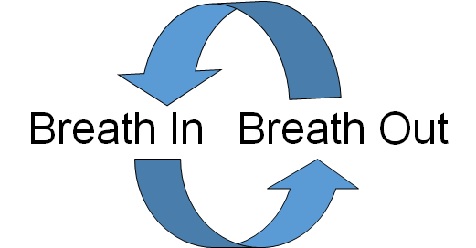Let us look at the characteristics of ordinary breathing:
- Ordinary breathing is autonomic. It goes on 24/7 without our being aware of it. It goes on in waking state, in dream sleep and also in deep sleep when we not conscious at all. Figure 1 graphically depicts its autonomic nature.

Figure 1 graphically depicts the autonomous nature of ordinary breathing. It consists of exhalation following inhalation and inhalation following exhalation without us being aware of it at all.
- Ordinary breathing is driven by our unconscious mind in accordance with the normal course of nature.
-
Rate of ordinary breathing varies from individual to individual between 12 breaths/minute to 20 breaths/minute with an average of around 15 breaths/minute. The video below shows the speed of breathing at 15 breaths per minute. Please note that downward movement of the ball is meant to show the exhalation part of a breatrh and the upward movement the inhalation part of it.:
-
Ordinary breathing is also shallow breathing with around 1/2 litre of air per breath at the rate of 15 breaths/minute. Higher the breathing rate, lower the volume of air per breath and lower the breathing rate, higher the volume of air per breath.
-
In ordinary breathing, lungs begin inhalation or exhalation depending upon the homeostatic set points of the individual.
-
The homeostatic set points for inhalation and exhalation are determined by a combination of the current neural circuitary of our brain and the instantaneous state of our emotions.
-
Our state of emotions keeps changing from moment to moment affecting the rate of our ordinary breathing.
-
Our neural circuitry changes from time to time with changes in our hormonal chemistry. This also changes the rate at which we breathe ordinarily.
-
Ordinary breathing maintains our survival leading to ordinary lives.
-
Ordinary breathing does not help focus. On the other hand, it is distractive.
-
Ordinary breathing may be called our default breathing mode. We default to it on being unaware of breath: a state in which we largely exist.